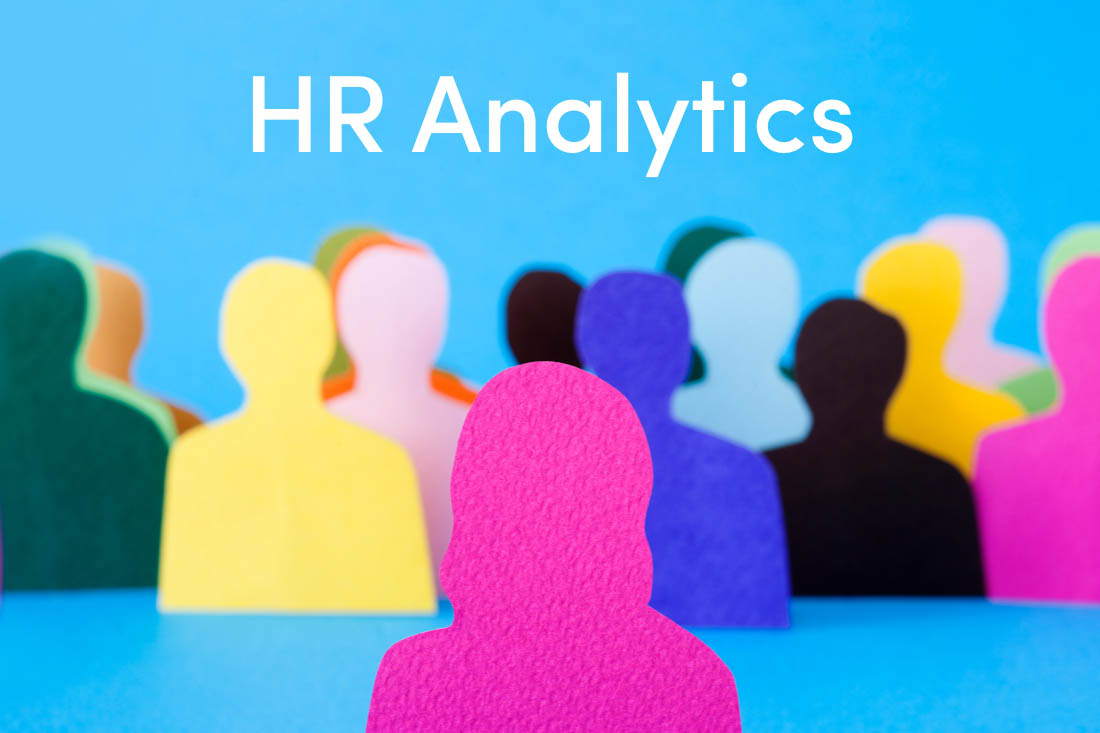Want to gain a strategic advantage? Look no further than HR analytics. This emerging realm of data analytics has the power to turn any HR team into a data-driven decision machine. By harnessing the power of people data, you’ll make faster, better decisions and empower your workforce like never before.
What is HR analytics?
HR analytics, also known as workforce analytics or people analytics, analyzes employee data to inform human resources functions. It incorporates a variety of HR metrics to identify workforce trends, guide policy decisions and uncover areas for improvement. This data-driven approach allows HR professionals to replace guesswork with fact-based decisions.
What metrics do HR analytics measure?
HR analytics incorporates a range of metrics organizations use to improve talent management, inform hiring processes, boost employee engagement and more. The most important ones to measure include:
- Turnover rate: Employee turnover measures how often employees leave your company, either on their own or involuntarily. It shows how effective your hiring and retention policies are.
- Attrition rate: Your attrition rate tells you when open positions go unfilled for extended periods or are eliminated. A high rate lets you know when to evaluate company culture or the employee experience.
- Retention rate: This HR metric shows how many employees choose to stay at your company. It indicates how effective your pay and benefits packages, training and development programs and other retention efforts are.
- Time to fill: This recruiting metric measures the days between a successful candidate applying for a job and accepting your offer. It shows how efficient your hiring process is.
- Offer acceptance rate: This measures how often candidates accept offers from your organization. It reveals how competitive your offers are within the current job market.
- Revenue per employee: This metric shows how much revenue employees contribute to the business and offers valuable insight into the quality of your recruiting and hiring processes.
- Headcount: Headcount measures the total number of employees at your company at any given time. This metric shows how staffing changes over time and makes it easier to prepare for future ones, such as seasonal hiring.
- Absenteeism: Your absenteeism rate, or absence rate, calculates how many days your employees miss during a given period. It factors in unplanned time off as well as habitual lateness, early end times and long lunch breaks.
- Employee utilization: Employee utilization measures how efficient your organization is at distributing work across teams. It shows you when people are at risk of burnout and if anyone’s skills are being wasted due to underutilization.
- Employee productivity: This metric tells you not only how much people get done but also how much time they take and how many resources they use.
4 reasons HR analytics is important for your business
HR analytics removes guesswork and gut instinct from your most important decisions. Many of the world’s most successful companies use it to:
1. Gain a deeper understanding of the workforce
Historically, organizations have relied on employee surveys, questionnaires and feedback tools to guide HR decisions. But these tactics require employees to self-report on everything from workplace culture and management style to team dynamics and technology usage, and the results are influenced by how people feel on a particular day. Plus, the sample size is usually small. In fact, experts view 90% response rates as suspiciously high and unreliable.
HR analytics reveals many of the same insights you’d gain from surveys but based on actual behaviors instead of sentiment. Even better, workforce analytics software measures HR metrics across your workforce to provide data at the team, department and individual levels. You get all kinds of real-time insights — if people are more productive when working from home or the office, what’s standing in the way of stronger employee performance, when overworked employees are at risk of burnout and more.
2. Anticipate and plan for future workforce needs
Whether you need to improve talent acquisition or want to avoid overhiring and layoffs, HR analytics is the way to go. Regularly collecting and analyzing HR metrics allows you to accurately predict future staffing needs so you can plan for workforce changes accordingly.
For example, many HR professionals use workforce forecasting reports to estimate how many hours and resources teams will need within the next year. This type of HR data is especially helpful when a company is scaling quickly. It allows you to identify current skills gaps so you can invest in more training, recruiting or both. This approach ensures you have the right talent to drive business outcomes, both now and in the future.
3. Identify the need for new HR initiatives
Did you know 33% of U.S. hiring managers expect employee turnover to increase? One survey noted that workers are so burned out that 20% think of quitting every day. In another, 95% said they feel pressured to overwork. Given these stats, you can’t afford not to evaluate your HR processes, programs and policies. HR analytics makes it easy to prevent these and other problems before they start.
For example, if your HR analytics dashboards show remote employees are more productive than their in-office colleagues, use those insights to expand flexible work across more teams. If you see people spending more time on video calls than focused work, take steps to reduce unnecessary meetings. HR analytics is also a great way to test new policies and programs, such as the four-day workweek or employee experience initiatives.
4. Measure the impact of changes
With real-time data on everything from team productivity to employee burnout, HR analytics makes it easy to measure the impact of organizational changes. New leadership? See how performance has shifted since your current CEO’s start date. Testing a new program? Find out how it impacts the length of employees’ workdays and their ability to focus. This change management data lets you test, measure and evaluate all kinds of initiatives. Rather than relying on guesswork, you’ll actually see when a policy’s working — and when it’s time to change tactics.
For example, by comparing employee well-being and engagement levels before, during and after a big transition, you’ll see if a specific HR strategy was planned and executed effectively. Apply this same approach to all your most important HR metrics. Even a small change in your turnover or retention rate will make a big difference if you catch it early and adjust accordingly.
How to get started with HR analytics in 4 steps
You don’t have to be a data scientist to start leveraging HR analytics, but it’s important to have the right tools and processes in place. Follow these four steps to get started today.
- Define your goals: Decide what you want to achieve with HR analytics, whether you have one specific goal like improving employee retention or need multiple metrics to better manage employees. This will help you determine what software to use.
- Identify your data sources: Determine what sources of data you already have, such as an existing performance management or human resources information system. Then identify which metrics you need but aren’t included.
- Streamline with dashboards: If your current reports are incomplete or difficult to understand, consider using a platform like ActivTrak to combine workforce activity with other data sources in one platform.
- Monitor and adjust: For HR analytics to be effective, you must continuously measure, adjust and monitor the impact of your HR initiatives.
Implement HR analytics in your organization with ActivTrak
As technology advances and organizations embrace the power of data, HR analytics will play an increasingly crucial role in shaping the future of work. By leveraging the power of people data, you can attract and retain top talent in any job market.
Not sure where to start? ActivTrak collects the most important HR metrics for you and presents them in easy-to-understand charts and graphs — plus actionable recommendations. Request a demo to see how HR teams use it to guide policies and build winning cultures.





